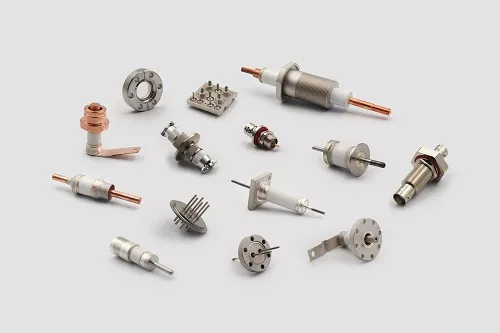Operating at the extremes of the international energy industry ranges from the blistering temperatures of nuclear reactors to the deep geothermal wells. In such harsh circumferences, reliable electrical connectivity is a necessity. High-Temperature Feedthrough Terminals have been designed to connect delicate instruments to harsh operational environments, while providing the highest levels of safety, operational efficiency, and uninterrupted data at all times.
Nuclear Power: Where Failure Is Not an Option
In nuclear reactors, feedthrough systems face unparalleled challenges:
Radiation Resistance: Withstanding neutron flux & gamma radiation degradation
Thermal Stability: Operating at 400-700°C in reactor pressure vessels
Hermetic Sealing: Preventing coolant leaks in PWRs/BWRs for decades
Safety Compliance: Meeting ASME III & IEEE 323 standards

Applications: The in-core neutron monitors, thermocouple arrays, control rod position monitors, and emergency cooling systems use ceramic-to-metal (CerMet) High-Temperature Feedthrough Terminals to sustain signal fidelity in systems that are critically sensitive to life in damage and failure.
Fossil Fuels: Drilling Deeper, Burning Hotter
From deep well drilling to turbine monitoring, feedthrough terminals enable operations in excessive temperatures of 300°C and above:
Downhole Instrumentation: MWD/LWD tools in >200°C geothermal/oil wells
Gas Turbine Monitoring: Vibration/Temperature sensors in combustion zones
Boiler/Steam Line Sensing: Superheater performance tracking
Flue Gas Analysis: Corrosion-resistant probes in exhaust streams
Material science is key here – feedthrough designs using Inconel 600, Alloy 625, or alumina ceramics prevent sulfidation and creep failure in aggressive environments.
Renewable Energy Frontiers
Even green tech pushes thermal limits:
Concentrated Solar Power (CSP): Molten salt circuits at 565°C require robust High-Temperature Feedthroughs for pump controls and thermal monitors.
Geothermal Plants: Brine-corrosion resistant terminals for wellhead sensors.
Hydrogen Electrolyzers: Sealing terminals for high-purity gas production.
Why Energy Engineers Specify HT Feedthroughs
Feature Energy Sector Impact
1200°C Rating Survives turbine exhaust/combustion zones
Hermetic Seal Maintains reactor coolant boundaries
Custom Configs Matches unique wellhead/reactor geometries
Corrosion Resistance Withstands H₂S, brines, molten salts
The INSEALING Advantage for Energy Applications
Powering the Energy Transition
As we push toward advanced nuclear, carbon capture, and enhanced geothermal systems, High-Temperature Feedthrough Terminals will play an increasingly vital role in enabling instrumentation at the thermal frontier. Their ability to maintain electrical continuity while withstanding pressure, corrosion, and extreme heat makes them unsung heroes of energy infrastructure.